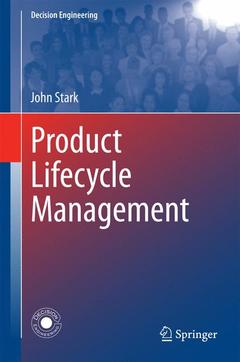Description
Product Lifecycle Management (Volumes 1 and 2) (3rd Ed., 3rd ed. 2016)
Decision Engineering Series
Coordinator: Stark John
Language: English
680 p. · Hardback
Out of Print
Description
/li>Contents
/li>Biography
/li>Comment
/li>
This two-volume third edition updates and adds to the successful second edition and gives the reader a thorough description of PLM, providing them with a full understanding of the theory and the practical skills to implement PLM within their own business environment. This new and expanded edition is fully updated to reflect the many technological and management advances made in PLM since the release of the second edition. Describing the environment in which products are developed, manufactured and supported, before addressing the Five Pillars of PLM: business processes, product data, PLM applications, Organisational Change Management (OCM) and Project Management, this book explains what Product Lifecycle Management is, and why it?s needed. The final part of the book addresses the PLM timeline, showing the typical steps and activities of a PLM project or initiative. ?Product Lifecycle Management? will broaden the reader?s understanding of PLM, nurturing the skills needed to implement PLM successfully and to achieve world-class product performance across the lifecycle.
The second volume provides insights into the emergence of PLM and the opportunities it offers, key concepts such as the PLM Grid and the PLM Paradigm are introduced along with the main components of PLM and the associated characteristics, issues and approaches.
Detailing the 10 components of PLM: objectives and metrics; management and organisation; business processes; people; product data; PDM systems; other PLM applications; facilities and equipment; methods; and products, it provides examples and best practices.
The book concludes with instructions to help readers implement and use PLM successfully, including outlining the phases of a PLM Initiative: development of PLM vision and strategy; documentation of the current situation; description of future scenarios; development of implementation strategies and plans; implementation and use. The main activities, tasks, methods, timing and tools of the different phases are also described.Provides the reader with a thorough explanation of Product Lifecycle Management (PLM) and equips them with the skills to implement PLM within their own business environment
Details the components of product lifecycle management (PLM) and provides practical help for its successful implementation
Provides insights into PLM, and promotes the skills needed to implement PLM successfully and to achieve a world-class product performance across the life cycle
Draws on the author’s extensive PLMProduct consulting activities and experience




